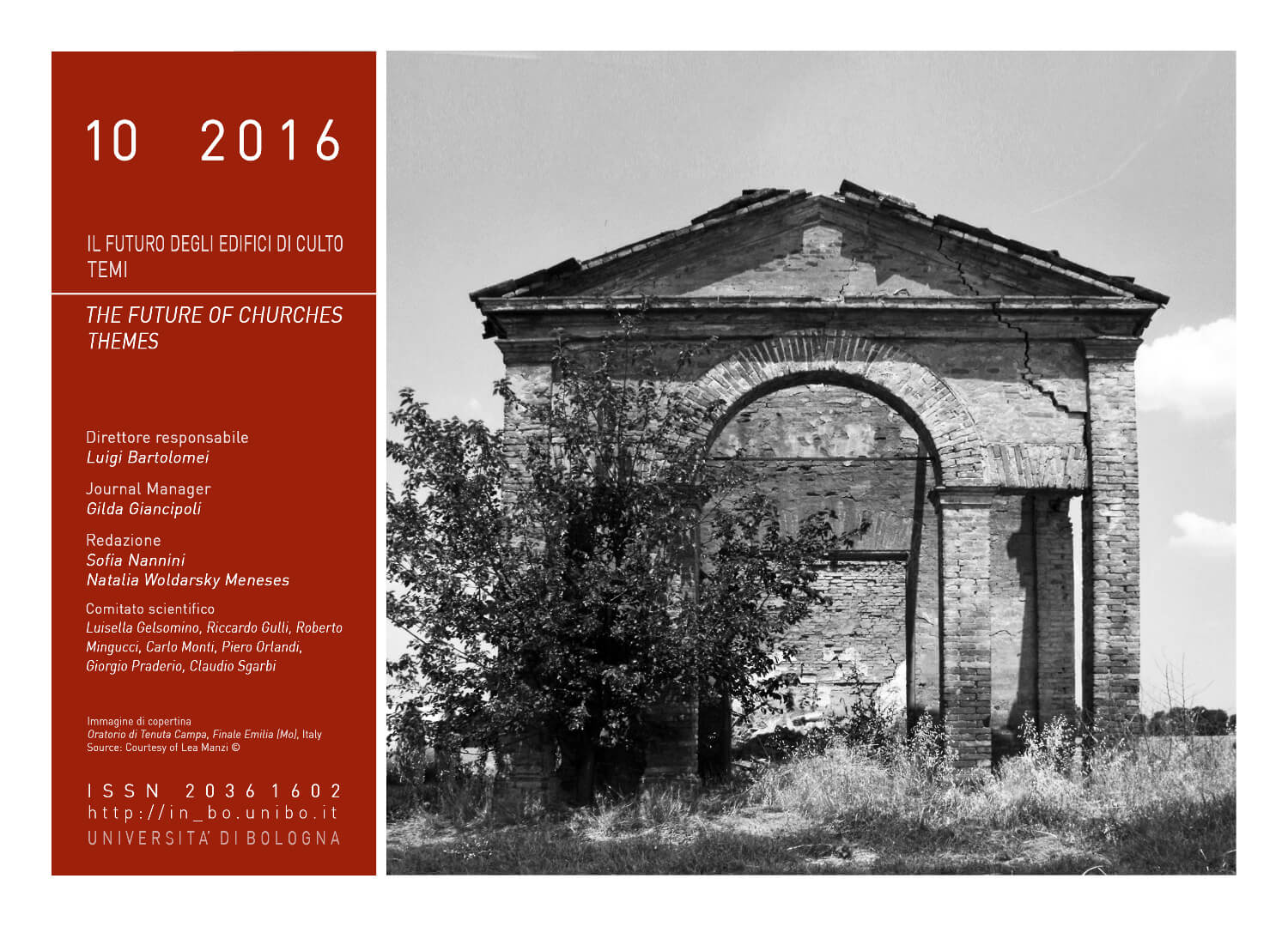Enhancement of spiritual landscapes pilgrimage routes in Asia Minor between Paganism, Christianity and Islam.
DOI:
https://doi.org/10.6092/issn.2036-1602/6464Keywords:
Landscape, Spirituality, Preservation, Enhancement, TourismAbstract
To pilgrims coming from the Mediterranean and Europe arrived in Asia Minor, some cities appeared real “wonderlands". The amazement reason was given mainly by Christian basilicas that rose complex and impressive in a context of the Roman ruins. These urban centers correspond to the sites of Christian communities mentioned in the Book of Revelation of Saint John. The pilgrims walked precise routes, touching devotional centers linked to the Apostle John, the Virgin, the first martyrs. But what the pilgrim felt yesterday and what remains today of these spiritual landscapes? Such as contingent valuation strategies? Based on these questions, the paper proposes a hypothesis of exploitation that do recognize, through evocations and tangible references, a dense area of spirituality and devotion that binds the past Pagan worship, Christian mysticism, Islamic religiosityReferences
C. Tosco, Il paesaggio come storia, Bologna 2007.
P. Arthur, Hierapolis bizantina e turca, Istambul 2006.
F. Cimok, The seven churches, Istambul 2003.
H. Dedeoğlu, The Lydian and Sardis, Istambul 2003.
L. Scazzosi, Paesaggio e Archeologia, in T. K.Kirova (a cura di) Conservation and restoration of
the archaeological heritage, Cagliari 2002.
M. Büyükkolanci, St.John, Efeso 2001.
Downloads
Published
How to Cite
Issue
Section
License
Copyright (c) 2017 Emanuele Romeo
Copyrights and publishing rights of all the texts on this journal belong to the respective authors without restrictions.
This journal is licensed under a Creative Commons Attribution-NonCommercial 4.0 International License (full legal code).
See also our Open Access Policy.
Metadata
All the metadata of the published material is released in the public domain and may be used by anyone free of charge. This includes references.
Metadata — including references — may be re-used in any medium without prior permission for both not-for-profit and for-profit purposes. We kindly ask users to provide a link to the original metadata record.







